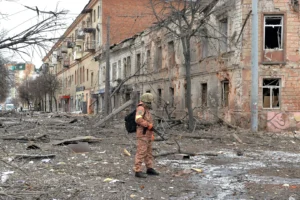After facing devastating tsunami damage, Kona Village, A Rosewood Resort sat silent on the sacred lands of Kaʻūpūlehu in Hawaii for over a decade until it reopened its doors in July. The restoration of the 81-acre resort spanned seven years, an undertaking led by Hawaii-raised architect Greg Warner of Walker Warner Architects and design firm NICOLEHOLLIS, both based in San Francisco.
Nicole Hollis, founder of her eponymous firm, visited the site after the tsunami and before the demolition work began on the original public spaces and hale, the traditional Hawaiian housing structures used as guest bungalows. “Guestrooms were untouched and pieces of furniture were still in the rooms. [There was] a warehouse full of historic photos, uniforms, and artifacts to comb through,” she says. “This gave us a sense of what the experience would have been at the original Kona Village to start our design concept.”
Working with Walker Warner, Hollis and her team created a cohesive architectural and finish palette. The use of wire brushed oak wood floors, thatched roofs made of recycled materials, Douglas fir tongue and groove walls and ceilings, textural basalt flooring, and weathered cypress exteriors elicit a natural yet striking quality throughout the property.
“The palettes were inspired from the site—from the weathered palm tree bark to the gradation of the color of the sand,” adds Hollis. “We wanted the buildings and interiors to be part of the land—a calm and grounding transition from interior to exterior—but then layer in one or two unique finishes for each area.”

Each of the 150 guest hale carries a distinct design direction based on its geographic location. The red and black color palette in the North Village takes inspiration from the surrounding lava fields and the Mauna Kea volcano in the distance, while shades of blue and yellow in the South Village reflect the nearby shoreline and sea. By the lagoon, darker woods pair with deep green and teal, complementing the natural brackish waters. The rooms also encapsulate Kaʻūpūlehu’s rich history as a fishing village, with custom furnishings and décor informed by traditional Hawaiian motifs, such as handcrafted boat-shaped beds and decorative pieces inspired by fishing tools.
Over at the resort’s Asaya spa, guests are transported into a world that mimics the natural black lava flow on which the spa is built. The wellness spaces—which include a sauna, steam room, sun decks with hot and cold plunge pools, tranquility areas, and treatment rooms—are characterized by darker tones with a rugged quality that diverges from the rest of the property. Meanwhile, the F&B spaces, including Talk Story Bar, Shipwreck Bar, and Moana, have all reemerged with a modern touch that remains reminiscent of their former glory. In the latter, native Hawaiian sculptor and artist Kaili Chun crafted a ceiling installation that nods to crab claw-shaped canoe sails.
Kona Village was thoughtfully renewed with the understanding that it sits on borrowed land, owned by the Kamehameha Schools, which should be protected along with its people and its stories. To that end, Hollis’ team collaborated closely with a cultural committee to curate a selection of art and furnishings by the next generation of Hawaiian artists and craftspeople, epitomizing the fusion of the past, present, and future.
“It was an experience that was like no other project,” Hollis says. “We were so fortunate to work with such a great team from the start that had so much history and stories of the site we were able to pull inspiration from. They were great guides to help us tailor selections and tell the story of native and Hawaiian artists.”
Source : HospitalityDesign











